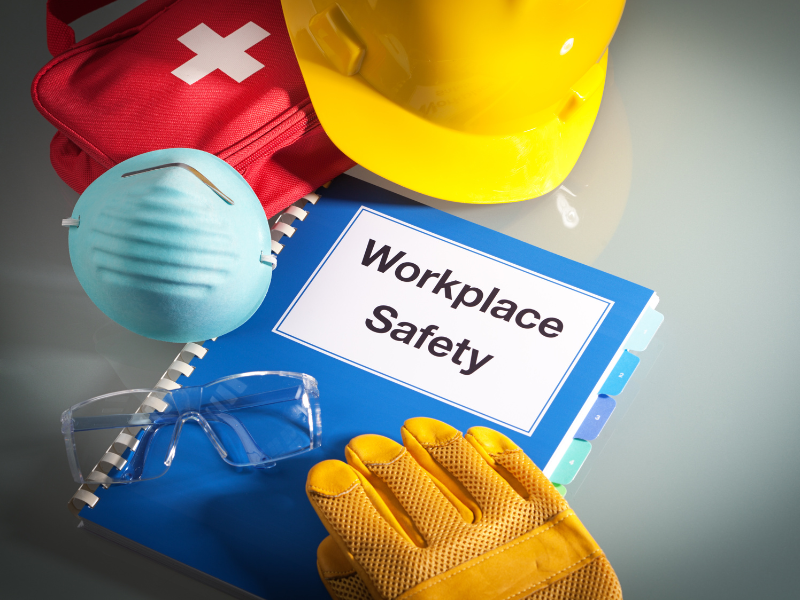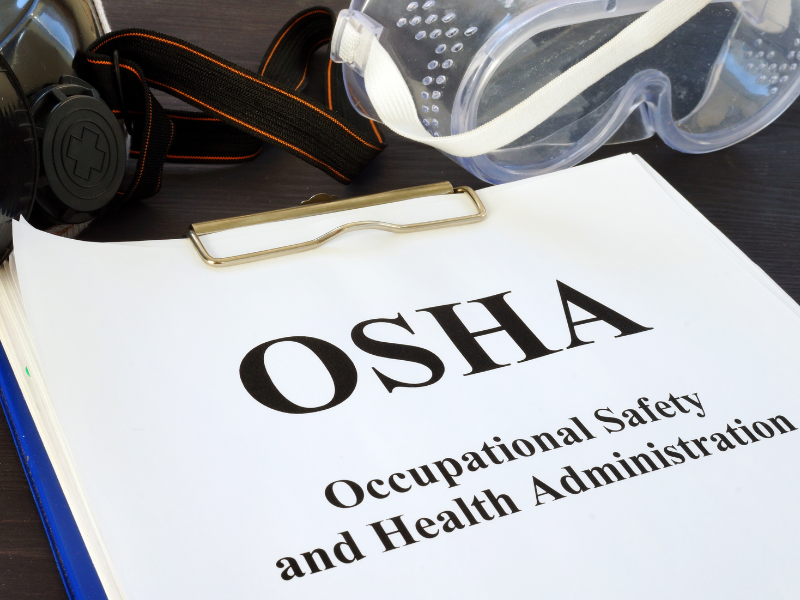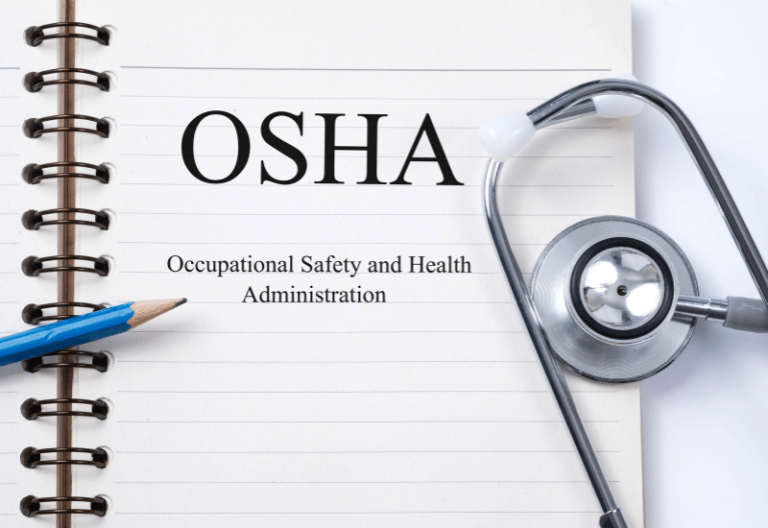The OSHA requires employers to provide a safe and healthy work environment, including sufficient training on safety and handling workplace hazards. This guide provides an overview of what employers must consider when designing, implementing, maintaining, and revising training programs.
Table of Contents

The Importance of OSHA Training
The OSHA ensures employee safety across various industries like construction, manufacturing, healthcare, and retail. Following OSHA standards improves employee productivity and reduces absenteeism. It can also lead to higher profits and lower legal risks.
OSHA training ensures you know these safety standards and can quickly identify possible hazards. You can correct potential violations and avoid hefty fines and penalties.
Managers and workers will also have increased awareness of workplace hazards and the necessary controls to ensure safety. This will help them minimize the risks of accidents and work-related injuries. They will also be better positioned to comply with federal and safety health requirements and perform their roles more effectively.
OSHA Training Requirements
OSHA has different training requirements depending on your industry, specific job duties, and potential hazards in your work environment.
- General Industry Training – includes topics such as hazard communication, emergency action plans, fire prevention, and electrical safety.
- Construction Industry Training – specific to construction workers and includes topics on fall protection, scaffolding safety, electrical hazards, excavation and trenching, and PPE (personal protective equipment)
- Hazard Communication – specific for employees who may be exposed to hazardous chemicals and covers topics on how to identify chemical hazards, read safety data sheets, and understand chemical labels
- Lockout/Tagout – workers performing maintenance or servicing on machinery or equipment should learn how to prevent accidental startup or release
- Bloodborne pathogens – workers exposed to blood or potentially infectious materials should learn how to minimize the risk of exposure and proper handling procedures of potentially infectious materials

Types of OSHA Training Programs
There are two common types of OSHA training: the 10-hour and 30-hour training programs. Only accredited institutions can conduct these trainings as they are the only ones permitted to issue an OSHA card to confirm that you’ve completed the program.
The OSHA warns against fraudulent organizations and persons who conduct unauthorized training and offer false guarantees. They also emphasized that taking any of these training programs doesn’t guarantee employment.
OSHA 10-Hour Training
The OSHA 10-hour training program lasts 10 hours, delivered throughout multiple sessions. It is aimed at entry-level workers and provides fundamental awareness of occupational safety and health topics.
The curriculum covers basic safety and health hazards in general industry and construction workplaces. Some examples include hazard recognition, fall protection, electrical safety, hazard communication, and PPE.
Participants receive a completion card after completing this training.
OSHA 30-Hour Training
The OSHA 30-hour training program is a more comprehensive program that runs for 30 hours, delivered over several days. Supervisors, managers, and employees with safety responsibilities, such as safety officers, are expected to attend these training sessions.
The training covers more details about workplace safety and health topics such as specific safety regulations, hazard identification and control, ergonomics, incident investigation, and safety management techniques.
Employers can also require employees to undergo these programs to demonstrate their commitment to workplace safety. Having well-trained employees can help organizations reduce the risk of accidents and injuries and stay compliant with OSHA regulations.

Who Needs OSHA Training?
There are four main OSHA environment categories. You will need to implement OSHA training if your workplace belongs to any of these categories, namely:
Agriculture
OSHA agricultural regulations cover anyone growing crops or raising livestock. These regulations govern the management of farm equipment, sanitation conditions, age of workers, and chemical exposure.
Most agricultural workers suffer from harmful sun exposure, unhealthy respiratory conditions, and hearing loss.
Construction
When you think of OSHA training, construction workers are the first people to come to mind. That’s a given because the industry involves high-risk work environments with potential hazards such as heat exposure, asbestos exposure, and falls.
The use of heavy machinery can also cause accidents when workers fail to operate them properly. The OSHA also mandates monitoring toxic substance exposure and providing high-quality drinking water at all worksites.
Maritime
Workers in the maritime industry can become injured when confined in small spaces and exposed to toxic chemicals. They can also suffer from falls, slips, and trips and be exposed to fire, equipment, and machine hazards.
OSHA monitors workers’ safety for employees involved in the scrap, repair, or building of ships, including those involved in moving materials and cargo.
General Industry
Any industry that falls outside the above categories, such as healthcare, is considered a general industry. Companies falling under this category must improve safety by having hazard prevention and control measures led by top management, encouraging widespread employee participation.
Exemptions
OSHA compliance is required for the majority of for-profit companies with very few exemptions. Some exempted companies are those providing domestic services, farms employing immediate family members, and churches.
Businesses that are covered by other federal regulations (such as mining and nuclear power companies) are also exempt from OSHA compliance.
Self-employed individuals and state or federal agencies are also not required to undergo OSHA training.
Choosing the Right OSHA Training Provider
OSHA training achieves more than just compliance. It reinforces safety training and keeps employees safe from any potential sources of harm. Working with the right OSHA training provider ensures your employees get acquainted with the latest safety regulations, equipping them with robust knowledge to keep themselves and their workplace safe.
Check out OSHA’s list of accredited trainers to find legitimate training courses and avoid fraud. Different trainers are authorized to teach according to your industry, so always verify whether the trainer is qualified to provide training in your specific field.







